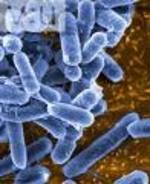Control of infectious agents

Hovedinnhold
Control of infectious agents, pathogens and microbial status at the Lab Animal Facility
The laboratory animal unit is concerned with maintaining a restricted and thoroughly characterized microbial flora of the laboratory animals. At the University of Bergen, we refer to the FELASA guidelines for health monitoring. These have become the leading standards for most laboratory animal facilities in Europe. When we test our animals, we do this with reference to the FELASA guidelines.
Animals in themselves are the most common infection source, particularly when importing new animals. To avoid spreading infectious agents and pathogens, it is very important to maintain barriers. New animals must be quarantined. Animals not tested free of agents according to our quality demands, will be subdued to strict restrictions. They will be isolated in a microbial unit, will be attended to with separate procedures and will have limited access to common areas. Animal rooms or cages where such rules apply, are marked with yellow room cards or cage cards.
Barrier - Microbial unit
”Barrier” is a consept more than a defined quality standard. The basis is germ-free animals or animals inoculated with a defined and characterized microbial flora. These will be held and breeded under conditions which prevent access for new microorganisms (bacteria, virus, protozoes). A barrier is not a particular constructional device, but a comprehensive programme where building and interior together with strict procedures (SOP) prevent access for new microbes. Building and interior alone cannot work as barrier without a comprehensive and systematic programme.
A microbial unit is a defined area with a stable and known microbe characterization. A microbial unit can be an entire laboratory animal unit, a wing, an animal room, or a closed cage. A restricted and thoroughly characterized microbial flora is part of the standardization of the animal, to avoid unwanted impact on research results.
Import and export of animals
Increased use of GMO and more international cooperation has lead to increased transportation of animals between laboratory animal units and cooperating units/universities etc. When we import animals to the University of Bergen, we require the animals to have been tested according to the FELASA guidelines. Most cooperating units ask the same of us. Continuous health monitoring is therefore necessary to be able to show updated health certificates.
